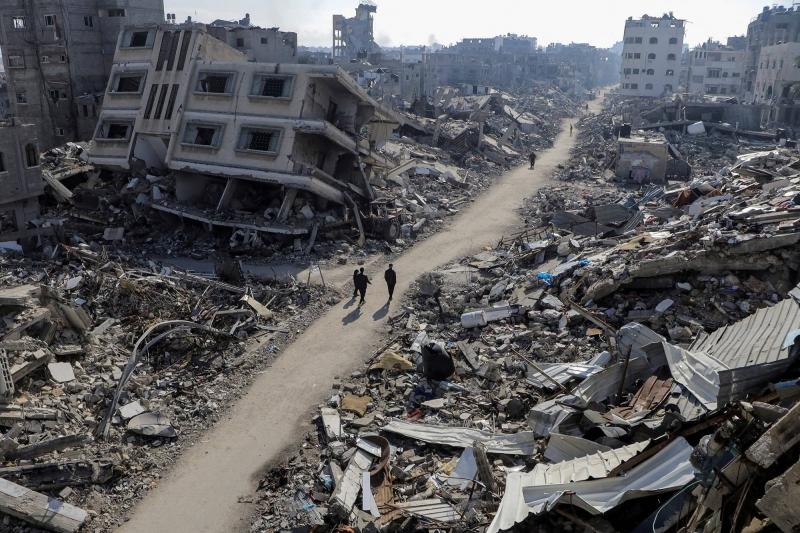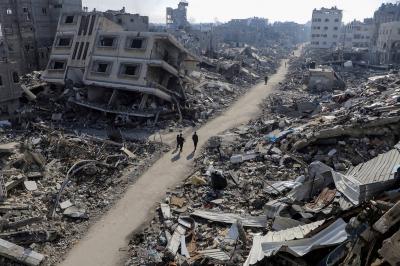American and Arab mediators have stated that they are close to reaching a ceasefire agreement in Gaza and releasing prisoners held by Hamas since the October 7 attack. However, the negotiations, ongoing for months, have been punctuated by moments of false hope. The negotiations have gained new significance following threats of retaliation from Iran and Hezbollah for the assassination of two senior leaders, which were attributed to Israel, raising concerns about the outbreak of a larger, more deadly war.
American and Israeli officials expressed cautious optimism after two days of negotiations in Qatar last week, during which mediators proposed a plan to reconcile views and bridge gaps in disagreements. However, Hamas has been less optimistic, stating that the latest proposal differs from previous suggestions that the movement had largely accepted.
U.S. Secretary of State Antony Blinken returned to the region and is scheduled to meet Israeli Prime Minister Benjamin Netanyahu today. Israel sent a delegation to Cairo yesterday, and high-level talks with the Israeli delegation in Egypt are expected later this week.
What is at stake in the ceasefire negotiations? A ceasefire could end the deadliest war ever between Palestinians and Israelis, a conflict that has destabilized the Middle East and sparked worldwide protests. According to local health officials, the Israeli attack has resulted in the deaths of over 40,000 Palestinians in Gaza, with the majority of the population displaced multiple times, often finding refuge in makeshift camps amid a significant collapse of the health sector and the destruction of entire neighborhoods.
Hamas's attack on October 7 led to the deaths of about 1,200 people and the capture of around 250 hostages. Approximately 110 hostages remain in Gaza, and Israeli authorities claim that nearly a third of them have died. More than 100 hostages were released during a week-long ceasefire in November.
Hezbollah has been launching drones and rockets at Israel almost daily since the outbreak of the war, to which Israel has responded with airstrikes and artillery fire. The violence has escalated, forcing tens of thousands to flee their homes on both sides of the border.
What are the key sticking points? Mediators are working on a three-phase proposal that involves Hamas releasing all captives in exchange for the release of Palestinian prisoners, Israel withdrawing from Gaza, and a permanent ceasefire. U.S. President Joe Biden supported the proposal in a speech on May 31, which was also approved by the UN Security Council. However, Hamas proposed amendments, and Israel sought clarifications, with each side accusing the other of making new demands that the other party cannot accept. Hamas is demanding guarantees that Israel will not resume hostilities after the release of the first group of the most vulnerable hostages, numbering thirty.
On the other hand, Israel is demanding assurances that negotiations will not extend indefinitely during the second phase, which involves the release of remaining live hostages, including male soldiers. Netanyahu has recently insisted on retaining a military presence along the Gaza-Egypt border and along the line dividing the territory to inspect Palestinians returning to their homes in the north.
Israel denies that its demands are new, but there has been no indication of them in either Biden's speech or the UN's resolution on total withdrawal. Other outstanding issues include which Palestinian prisoners will be released and whether they will be sent into "exile."
Who decides on the ceasefire? Any ceasefire agreement must be acceptable to both Yahya Sinwar—the mastermind of the October 7 attack and now Hamas leader after the killing of Haniya—and Netanyahu. The latter faces considerable pressure from families of the hostages and a significant portion of Israelis to finalize an agreement for their return. However, far-right leaders in his coalition have threatened to overthrow the government if major concessions are made, potentially forcing him into early elections that could oust him from power.
Meanwhile, Sinwar is hiding in Gaza—likely in tunnels—and has maintained a hardline stance throughout the negotiations. He is also a top target for Israel, raising questions about what might happen if he is killed. Previously, Hamas negotiators took several days to send proposals to Sinwar and receive his comments, indicating that it may also take a week or more to get Hamas's official response to the final proposal this time.
Palestinian civilians in Gaza say they are exhausted and looking forward to a ceasefire. When Hamas accepted a previous proposal in May, spontaneous celebrations erupted immediately, but hopes quickly faded.




